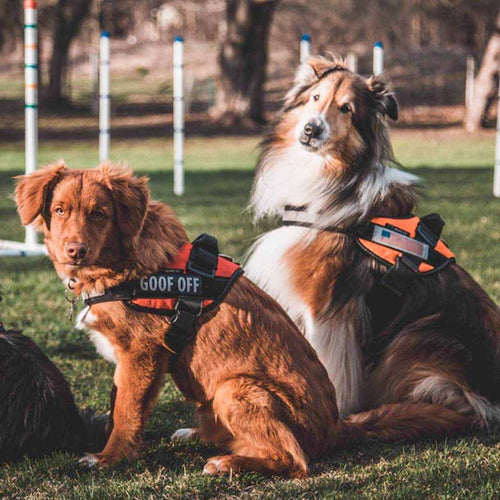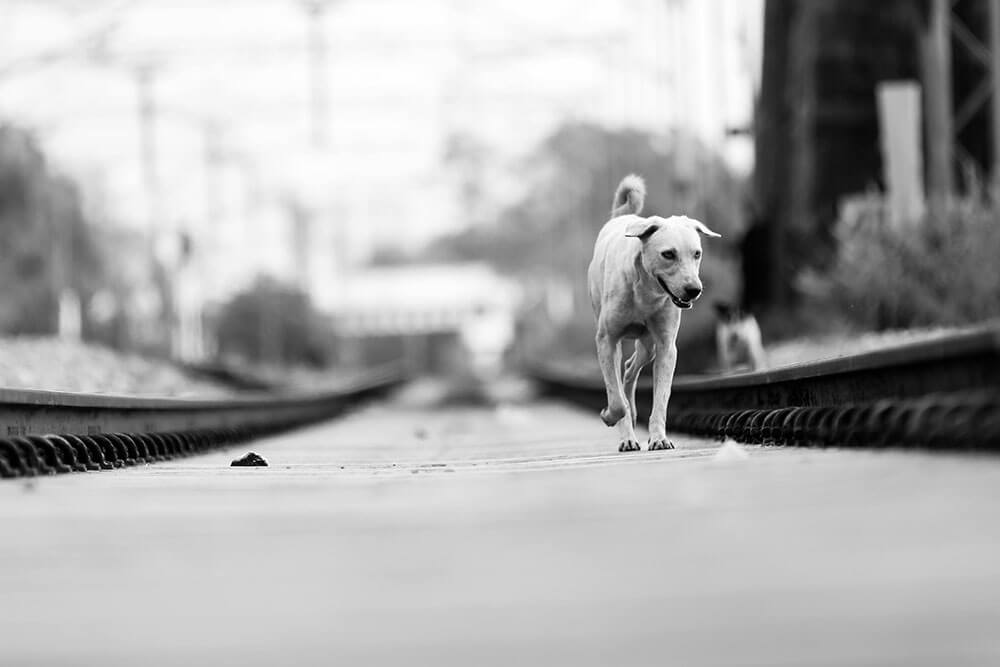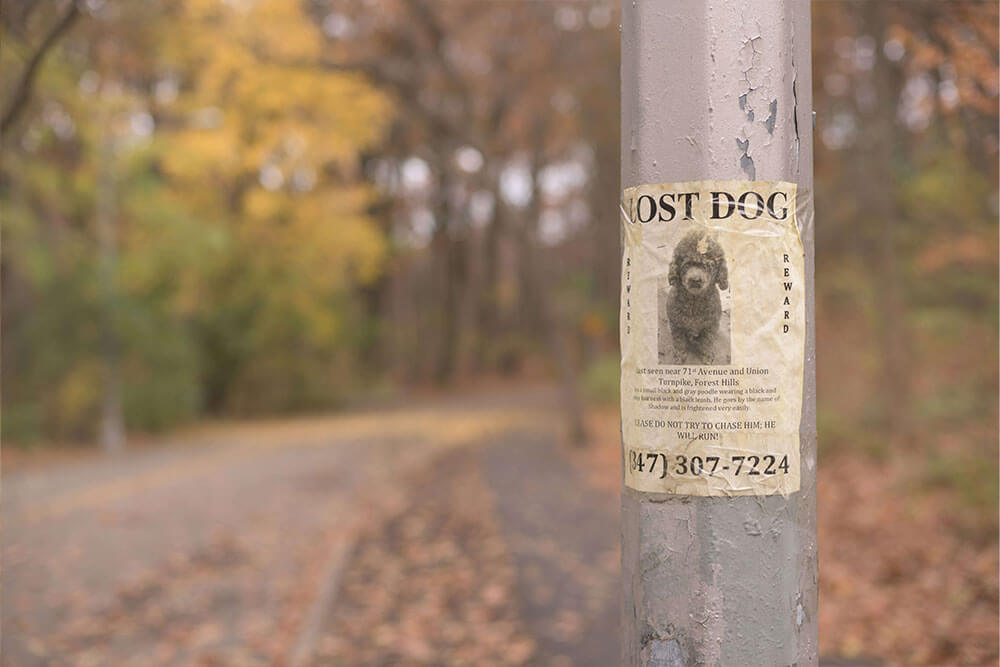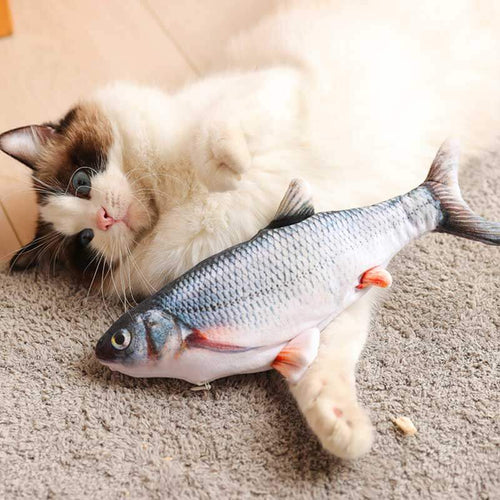What Is a Slip Lead?
Slip leads, a seamless blend of leash and collar, stand out as the epitome of versatility in the world of dog leads. This all-in-one design simplifies the pet-walking experience, doubling as a leash and collar that can effortlessly transform into a head or body harness with minimal adjustments.
Designed to tighten under tension and release when the tension subsides, slip leads bring a practical and user-friendly approach to dog handling. Beyond their simplicity, these leads emerge as indispensable tools in a trainer's toolkit, offering a range of applications in various situations.
Pros and Cons of Using a Slip Lead
Pros of a Slip Lead
- Comfort on Your Dog’s Neck
Unlike traditional collars that can be uncomfortable and dig into your dog’s neck, rope slip leads provide a comfortable fit without the need for a collar.
-
Effortless On and Off
Slide a slip lead on and off with ease, making it a convenient choice for quick walks, bathroom breaks, or when transporting your dog.
-
Effective Training Tool
Ideal for training, slip leads tighten when your dog disobeys and loosen when they stay close. While small dogs may need some preparation, older dogs can quickly adapt to this training leash.
Cons of a Slip Lead
-
Risk for Unsupervised Dogs
Leaving a dog alone with a slip lead may lead to pulling and tightening, posing a choking hazard if not attended to promptly.
-
Challenges with Disobedient Dogs
Not suitable for dogs still in the process of training, as constant pulling can strain the neck. Recommended for moderately trained dogs ready to follow commands.
-
Concerns for Small Dogs
Small breeds are particularly vulnerable to choking due to their weaker necks. Caution is advised, as they may tug and pull, potentially causing harm.
How to Put on a Slip Lead
Using a slip lead correctly is crucial for the safety of both you and your furry companion. Here's a seamless three-step process to ensure a secure and comfortable fit:
-
Familiarize Yourself with the Slip Lead
Understand the components and ensure the slider is mobile and adjustable as needed.
-
Preparing the Slip Lead
Create a loop large enough to effortlessly pass over your dog's head. Establish communication with your dog to avoid startlement and pulling away.
-
If you're right-handed, form a
"P" with the leash while your dog stands on your left side for the perfect loop.

-
If you're left-handed, form a
"6" with the leash with the dog on your right side.

-
Proper Placement and Adjustment:
-
Hold the loop (to be passed over the dog’s head) with your dominant hand at the join to prevent slipping. Hold the end of the lead with your non-dominant hand.
-
Place the slip lead over the dog's neck smoothly, ensuring it rests behind the jaw, right at the top of the neck (behind the ears). Never attach the slip lead to the middle of the throat or neck area to avoid potential harm during sudden movements.
-
Adjust the slip lead to fit your dog’s neck: Hold the slider, bring it down to close the loop, leaving at least two fingers of space between the rope and your dog's neck for a snug yet comfortable fit.
-
Releasing the Slip Lead with Finesse
Simply loosen the leather slide by moving it towards the handle on the leash.
Always communicate your intentions to your dog before removing the lead to foster trust between handler and dog.
The more you use the slip lead, the smoother the sliding process becomes.
How to Use a Slip Lead to Stop Pulling?
First and foremost, avoid maintaining constant tension on the leash, as it only encourages your dog to pull further. Instead, employ strategic techniques to keep a loose leash and instill focus on you during walks.
Incorporate directional changes and weave figure 8 patterns during your walks to maintain a loose leash. When your dog starts pulling ahead, initiate the following steps:
-
Quick Tug with the Slip Lead: Give a swift tug with the slip lead to redirect your dog's attention.
-
Verbal Cue - Max, this way!: Promptly get your dog's attention with a clear verbal cue.
-
Turn Around and Walk the Other Way: Execute a smooth turn and walk in the opposite direction.
The slight neck pressure experienced by your dog in the new direction reinforces the message to follow your lead and check in with you. This helps discourage pulling behavior.
Repetition for Polite Leash Walking:
Repeat these exercises frequently while refining your pup's leash-walking skills. Start in a controlled environment, such as your yard or a quiet area, and don't be discouraged if progress is slow initially. Focus on capturing your dog's attention and gradually increase the difficulty.
Remember, it's acceptable for your dog to walk ahead as long as there's no tension on the lead.
Recommended Add On: Dog Treat Pouch
Consistency and patience are key in slip leash training. For an added bonus, consider a Dog Treat Pouch to reward good behavior during your training walks. Start with gaining your pup's attention without treats, reinforcing the bond between you and your furry friend. Once mastered, introduce treat rewards for a positive reinforcement experience. Good boy, Max!
Pro Tips for Using a Slip Lead
-
Prep Work: Ensure your dog is proficient in walking on a leash before transitioning to a slip lead.
-
Slider Verification: Always confirm that the slide is securely locked before walking with your dog.
-
Practice Routine: Establish a practice routine using a stuffed animal to familiarize your dog with slip lead dynamics before actual implementation.
-
Proper Loop Placement: Keep the slip lead loop high up on the neck, close to the dog’s head, preventing choking and enhancing control.
-
Body Positioning: Stand or squat when working with dogs to enable quick movement if necessary.
-
Collar Compatibility: When using a slip lead with a collar, ensure the collar is positioned to not interfere with the slip lead's effectiveness.
-
Adjustment for Pulling: In case of pulling-induced tightening around the throat, promptly halt and make necessary adjustments for your dog's comfort and safety.
Choosing the Right Moments for Slip Lead Use
When to Opt for a Slip Lead
-
Post-Leash Training Success: Implement a slip lead after your dog has successfully mastered walking on a leash and you're focusing on refining their walking behavior.
-
Training Commencement Alert: Use a slip lead when signaling the start of a training session, setting the tone for attentive and controlled behavior.
-
Transportation Needs: Employ a slip lead when transporting your dog to or from different locations, ensuring secure and manageable travel experiences.
-
Efficient Loading and Unloading: Facilitate smooth loading and unloading of dogs from cars or other transport vehicles with the help of a slip lead.
Instances to Avoid Using a Slip Lead
-
Tying Dogs or Unsupervised Time: Refrain from using a slip lead when tying your dogs to an object or during times when they are left unsupervised.
-
Early Leash Training Phases: Avoid introducing a slip lead during the initial stages of leash training. Dogs should have a foundation in basic walking and healing commands.
-
Persistent Pullers: Opt for alternative leads if your dog persistently pulls during walks. Explore other lead options that better suit their behavior.
-
Not Suitable for Puppies, Cats, Kittens, or Small Breeds: Recognize that slip leads are not ideal for the specific needs of puppies, cats, kittens, or small breeds. Choose more suitable options for their safety and comfort.
A Guide to Choosing the Right Slip Lead
Choosing a dog slip lead involves considering your dog's size, behavior, and your own preferences. Here are some tips:
-
Size: Ensure the slip lead is appropriate for your dog's size. It should be long enough to provide a comfortable loop around the neck without being too loose or too tight.
-
Material: Slip leads come in various materials such as nylon, leather, or braided rope. Consider your dog's activity level and whether they have any sensitivities to certain materials. Leather leads are durable but may require more maintenance.
-
Thickness: The thickness of the lead can affect its strength and durability. For larger or stronger dogs, a thicker lead may be more suitable.
-
Training Needs: If you are using the slip lead for training purposes, consider one with additional features like a stopper or a limited slip design to prevent it from tightening too much.
-
Handle: Check the handle for comfort. Since slip leads are often used for quick corrections, a comfortable grip is important.
-
Reflective or Bright Colors: If you often walk your dog in low-light conditions, a reflective slip lead or one in a bright color can enhance visibility and safety.
-
Durability: Look for a slip lead that is sturdy and durable, especially if you have an active or strong dog.
-
Ease of Use: Make sure the slip lead is easy to put on and take off. Quick-release buckles or simple slip-on designs can be convenient.
Remember, it's always a good idea to consult with a professional dog trainer or your veterinarian for advice tailored to your specific dog's needs.
Frequently Asked Questions
-
Are Slip Leads Cruel?
The use of slip leads, like any tool, depends on how they are used. When used correctly and responsibly, slip leads can be effective and humane tools for training and walking dogs. However, improper use or excessive force can lead to discomfort, injury, and potentially be considered cruel.
It's essential to use a slip lead appropriately, ensuring it is fitted correctly around the dog's neck and used for its intended purpose. Jerking or pulling excessively on a slip lead can cause harm and distress to the dog. It's crucial to educate oneself on proper handling techniques and, if in doubt, seek guidance from a professional dog trainer.
Like any training tool, the key is in the handler's understanding and responsible use. Always prioritize positive reinforcement and reward-based training methods alongside any tool, and consider the specific needs and temperament of the individual dog.
-
Are Slip Leads Bad for Dogs Necks?
When used correctly, slip leads should not be harmful to a dog's neck. However, improper use or excessive force can lead to discomfort, injury, and potential harm. Here are some considerations:
-
Proper Fit: It's crucial to ensure that the slip lead is fitted correctly around the dog's neck. It should be snug but not too tight, allowing you to slip it on and off easily. The lead should sit high on the neck, just behind the ears.
-
Avoid Jerking or Pulling: Excessive pulling or jerking on a slip lead can cause discomfort and potentially harm the dog's neck. The idea is not to use force but to provide gentle guidance and correction.
-
Training Technique: Slip leads are often used as training tools, and it's important to employ positive reinforcement techniques alongside their use. The goal is to teach the dog to respond to gentle cues and commands.
-
Check for Signs of Discomfort: Watch for any signs of discomfort or distress in your dog while using a slip lead. If you notice resistance, choking, or signs of stress, it's essential to reassess your training approach and consider alternative tools or methods.
-
Choose the Right Size and Material: Ensure that you choose an appropriate size and material for your dog. Different breeds and sizes may require different types of slip leads, and selecting the right one can contribute to the dog's comfort.
As with any training tool, responsible and informed use is key. If you have concerns or are unsure about using a slip lead, it's a good idea to consult with a professional dog trainer or behaviorist for guidance tailored to your specific dog and situation.
-
Are Slip Leads Suitable for All Dogs?
Dog owners may wonder if slip leads are appropriate for their dog's breed, size, or temperament. Explain that while slip leads can be effective for many dogs, individual preferences and needs may vary.
-
Why Does Cesar Millan Use Slip Lead?
Cesar Millan, known as the "Dog Whisperer," often uses a slip lead as one of his training tools. The slip lead is a versatile and widely used tool in dog training, and its application aligns with Millan's emphasis on calm, assertive energy and effective communication with dogs.
Here are a few reasons why Cesar Millan may choose to use a slip lead:
-
Communication: The slip lead allows for clear communication between the handler and the dog. When used correctly, it can convey gentle guidance and correction, helping to establish leadership and reinforce desired behaviors.
-
Quick Corrections: Slip leads are designed for quick and precise corrections during training. This can be especially useful for addressing unwanted behaviors promptly and efficiently.
-
Control: Slip leads provide handlers with a degree of control over the dog's movements. This is important, especially when working with dogs exhibiting challenging behaviors or during training sessions in various environments.
-
Versatility: Slip leads are versatile and easy to put on and take off, making them practical for various training situations, including walks and obedience training.
It's essential to note that Cesar Millan's methods and tools have been met with both praise and criticism. While some appreciate his approach, others argue that certain techniques, including the use of slip leads, may be too aversive. As with any training method or tool, it's crucial for dog owners to understand the principles behind its use and ensure that it aligns with their own training philosophy and the specific needs of their dogs.
-
Can I Leave a Slip Lead on My Dog All the Time?
It's generally not recommended to leave a slip lead on your dog all the time. Slip leads are designed for temporary use during walks or training sessions, and they may not be suitable for prolonged wear. Here are a few reasons why:
-
Safety Concerns: Leaving any collar or lead on your dog continuously can pose safety risks. Dogs may get caught on objects, and the collar could potentially snag on something, leading to injury.
-
Comfort: Continuous wear of a slip lead can cause discomfort for your dog. The pressure and constriction around the neck may lead to irritation or chafing, especially if the lead is not fitted properly.
-
Risk of Accidents: Dogs can be playful and may engage in activities that could lead to accidents or injuries if they are wearing a lead. For example, playing with other dogs or getting caught on furniture could result in a dangerous situation.
-
Supervision: It's important to supervise your dog when using any training tool, including slip leads. Leaving a lead on unsupervised increases the risk of the dog getting into situations that could be problematic.
If you need a collar for identification purposes, consider using a regular buckle collar with an ID tag. These are designed for continuous wear and are less likely to pose the same risks as a slip lead left on all the time.
Always prioritize your dog's safety and comfort, and use training tools responsibly. If you have specific concerns or requirements, it's a good idea to consult with a professional dog trainer or veterinarian for personalized advice.
-
Is a Martingale Collar Better than a Slip Lead?
The choice between a martingale collar and a slip lead depends on your specific needs, your dog's behavior, and your training preferences. Both tools serve different purposes, and neither is inherently better than the other; it's more about what suits your situation best.
Martingale Collar:
-
Purpose: Martingale collars are designed to provide gentle control over a dog without choking. They are often used for dogs that may slip out of regular collars or have a tendency to pull.
-
Construction: Martingale collars have a loop that tightens when the dog pulls, preventing it from slipping over the head.
-
Training: They can be useful for training and preventing escape, but they may not offer the quick, immediate control that a slip lead provides.
Slip Lead:
-
Purpose: Slip leads are often used for quick and precise control during walks or training sessions. They tighten when the handler pulls on the lead, providing feedback to the dog.
-
Construction: A slip lead is a continuous loop that can be easily slipped over the dog's head, functioning as both a collar and a leash.
-
Training: It's effective for communication and quick corrections, making it suitable for training purposes.
In summary, if your primary concern is preventing your dog from slipping out of the collar, a martingale collar might be a better choice. If you need a tool for quick corrections and clear communication during training, a slip lead could be more suitable. It's essential to consider your dog's behavior, your training goals, and what you feel most comfortable using. Some dogs may respond better to one tool over the other, so it can be helpful to try both and see which works best for you and your furry friend.




























